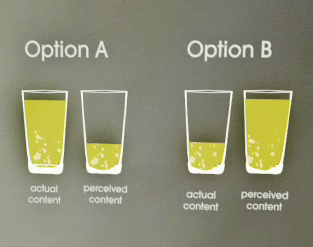Sunday, January 28, 2007
Windhouse Haunting Updated
Saturday, January 27, 2007
MultiTouch Display
- The Jeff Han video that's been circulated a lot (ok, points for music, for high density of info and fast cutting to demo points -- is this what makes it spreadable?)
- The Tog column that discusses some of the design history that went into the iPhone (many many ideas over many years, including random access voicemail -- we discussed and prototyped this at AT&T and at Excite 10 years ago too), some of it (but not most of it) at Apple itself.
- Bill Buxton's article referenced by Tog on multitouch displays. I know some of the people he's referencing, and I feel their mystification too.
Wednesday, January 24, 2007
Democratizing Data Insight
- Gapminder.org's Hans Rosling presented to TED a year ago, with the beautiful animated charts that his site made famous. His final comments say, in paraphrase, "Publically funded data is public, but hard to get at, hard to search, and presented in boring ways. We can and should change this." One of his great takeaways, for me, from his data illustrations of "third world" healthcare is that the error in the data is no doubt much less than the truth in it, at the magnitudes he illustrates.
- Swivel is a new site for data upload and exploration, with a fun blog. They also allow community discussion around their charts. I like their enthusiasm and enjoy the blog a lot.
- Friends from IBM (Martin Wattenberg and his group) have just announced a similar concept to Swivel's, but with even more graph types and they're all nicely interactive. Upload data, create a picture, and post it... other people can play with your data and present their own insight pictures, or modify yours. And comment on them. It's Many Eyes, and it even has a nice website!
- Google claims to be making real time stock quotes available, which means live data plotting is possible. Found on swivel's blog, a post on Googleblog: Real Time Quotes for Free.
- And don't forget processing.org. There's a nice visualization of State of the Union speeches highlighted there, including word frequencies and grade levels of the speech. (It's by Brad Borevitz.) They've been averaging around 9th or 10th grade level, but notice the great spike of Jimmy Carter's at grade 15.

Sunday, January 21, 2007
Friday, January 19, 2007
Annual Site Stats and Changes
Search phrases that strike me as funny, that show up every single week (usually with multiple counts):
- girls on boats
- alcohol induced blackouts
- temporary wallpaper
- real ghost photos/ghost photos/real life ghosts (etc)
Posts or pages with high hit counts, regularly:
- The crop-circle google-montage (I should put a Google ad or two here, it's ludicrous; and no one ever comments, but it's hit 68 times or more per week.)
- The weird red tree in Shropshire that almost made me drive off the road. It has 67 comments, which I should really trim/clean/purge most of. Also, add a Google ad.
- An incredibly short post on Bara Hack, haunted village in CT. With a lot of chimers-in on the illegality of going there, or not.
- My travel essays, especially the Siberia one. They're low on the page, but very popular, and the Windhouse and Fair Isle one are catching up in hits.
- The bio/resume page is visited at least 20 times a week. I've added some info to it recently.
I spruced up the blog template a tiny bit, since Blogger has added tagging ability. Now you can click on a link to items in categories I post on regularly: design, tech industry, management, archaeology, funny stuff, weird stuff, information visualization and data analysis, etc. It took hours and hours to do a cursory tag job on my 504 posts of the last few years, so if you notice a mislabel, let me know. The tags list is on the right side under the index of recent posts.
Thursday, January 18, 2007
Powerpoint Hilarity
 Le Grand Content by Clemens Kogler is an animated riff on powerpoint presentations of data and Big Questions (mostly those found in bad teenage poetry). It's very funny. Go and click on "view movie" and giggle.
Le Grand Content by Clemens Kogler is an animated riff on powerpoint presentations of data and Big Questions (mostly those found in bad teenage poetry). It's very funny. Go and click on "view movie" and giggle.
Ancient Curses
One of the most interesting finds from a site on Vine Street was a 'curse' tablet – a sheet of lead inscribed in the second or third century AD and intended to invoke the assistance of a chosen god. It has been translated by a specialist at Oxford University, and reads: 'To the god Maglus, I give the wrongdoer who stole the cloak of Servandus. Silvester, Riomandus (etc.) ... that he destroy him before the ninth day, the person who stole the cloak of Servandus…' Then follows a list of the names of 18 or 19 suspects. What happened to them is not recorded.There's another famous curse in Carlisle from the 1500's, recently carved on a stone art object that has supposedly caused all sorts of problems for the town since its installation in 2001: see Curse of the Cursing Stone. The curse itself is in old Scottish dialect, about 500 words, "one of the longest on record"-- it's addressed to the raiders on the Scottish borders, and was read out by priests to advertise their great displeasure with the illegal activities.
I curse their heid and all the haris of thair heid; I curse thair face, thair ene, thair mouth, thair neise, thairg toung, thair teith, thair crag, thair schulderis, thair breist, thair hert, thair stomok, thair bak, thair wame, their armes, thair leggis, thair handis, thair feit, and everilk part of thair body, frae the top of their heid to the soill of thair feit, befoir and behind, within and without. I curse thaim gangand and I curse thaim rydand; I curse thaim standand, and I curse thaim sittand; I curse thaim etand, I curse thaim drinkand; I curse thaim walkand, I curse thaim sleepand ; I curse thaim rysand, I curse thaim lyand; I curse thaim at hame, I curse thaim fra hame; I curse thaim within the house, I curse thaim without the house; I curse thair wiffis, thair barnis, and thair servandis participand with thaim in their deides.Curses are like legal documents, at least the good ones: they are comprehensive and leave out no body part or aspect of life, and usually they extend into eternity. My favorite curse is literary, Manfred's curse by Byron (it starts at line 200), gorgeous and bitter:
Though thy slumber may be deep,If you know of other good literary or historical curses, I'd be interested in pointers.
Yet thy spirit shall not sleep;
There are shades which will not vanish,
There are thoughts thou canst not banish;
By a power to thee unknown,
Thou canst never be alone;
Thou art wrapt as with a shroud,
Thou art gather’d in a cloud;
And for ever shalt thou dwell
In the spirit of this spell.
... And a magic voice and verse
Hath baptized thee with a curse;
And a spirit of the air
Hath begirt thee with a snare;
In the wind there is a voice
Shall forbid thee to rejoice;
And to thee shall Night deny
All the quiet of her sky;
And the day shall have a sun,
Which shall make thee wish it done.
From thy false tears I did distil
An essence which hath strength to kill;
From thy own heart I then did wring
The black blood in its blackest spring;
From thy own smile I snatch’d the snake,
For there it coil’d as in a brake;
From thy own lip I drew the charm
Which gave all these their chiefest harm;
In proving every poison known,
I found the strongest was thine own.
Saturday, January 06, 2007
Puzzles and Mysteries
He distinguishes between puzzles and mysteries, and the role of data in both.
The national-security expert Gregory Treverton has famously made a distinction between puzzles and mysteries. Osama bin Laden’s whereabouts are a puzzle. We can’t find him because we don’t have enough information. The key to the puzzle will probably come from someone close to bin Laden, and until we can find that source bin Laden will remain at large.The problem of what would happen in Iraq after the toppling of Saddam Hussein was, by contrast, a mystery. It wasn’t a question that had a simple, factual answer. Mysteries require judgments and the assessment of uncertainty, and the hard part is not that we have too little information but that we have too much. The C.I.A. had a position on what a post-invasion Iraq would look like, and so did the Pentagon and the State Department and Colin Powell and Dick Cheney and any number of political scientists and journalists and think-tank fellows. For that matter, so did every cabdriver in Baghdad.
Adding data to a mystery doesn't make it less of a mystery, but smart analysts can bring experience to bear that will point towards possible answers that are more or less likely to be true.
The Enron disaster qualifies as a mystery, and Gladwell's summary of the confused and complex financial details is disquieting. Even financial experts couldn't make heads or tails out of what was going on with the money. I'm unsettled by how easily corporate environments breed mysteries requiring complex analysis both of their internal and external behavior; and how hard it can be to understand and correct corporate mismanagement. People lose their livelihoods all the time now-- how many other Enrons are actually happening with no one noticing?
As a side note, as I read the recap of the Woodward and Bernstein investigation I actually thought, "This is surely going on all the time now. Would anyone be shocked at this in this political era?"
Joel's Quality of Software Teams; and Design

I'm a Joel Lover like many techies folks, and his job board is really tickling me. I just cruised the engineering ads (no, I'm not looking for a development job :-) and saw the the little questionnaire at the bottom of the page that measures the quality of the team hiring. Apparently people posting ads are answering honestly, which is excellent! And even more excellently, usability testing makes his list.
What would a similar test look like for hiring user experience designers, I wonder. A bunch would be similar, I think. I'd propose something like...
- Do you develop from specs written by designers?
- Do you have a design process with low fidelity work that is reviewed and refined before final specification is produced?
- Do you do usability testing during design or only after shipment?
- Do you change your design based on the results of user testing?
- Do you measure customer satisfaction with the product, including measures of user experience such as appeal, learnability, ease of use?
- Do designers talk to customers directly on a regular basis?
- Are developers involved in the design reviews and process?
- Does QA test for specification compliance?
- Is there a dialog about business requirements and product features that includes design staff?
- Do you require a design test and portfolio review during interviewing?
- Are other designers involved in interviewing designers?
- Are deadlines for specifications realistic and staged with multiple deliverables; or do you have single dates and one large spec document?
- Is your dev process sufficiently flexible to allow for design revisions without breaking everything and everyone?
- Are designers considered crucial to your business and to your developers? Regardless of the answer, how do you know if they are or not?
Monday, January 01, 2007
Giveaway of the Day
Today's Giveaway was a nice tool to clean out your Windows startup apps (I kept wondering what the heck was slowing me down on one laptop); the other day I got a simple video cutter that helps the YouTube crowd splice stuff together and chop out scenes. More and more of these things are being described as simple and easy to use. Yay!
"America's Stonehenge"
 Yesterday a friend and I went to see the site in Salem NH called "America's Stonehenge." (No, really, that's what the tourist name of it is.) Having crawled all over farmer's fields in Europe looking for passage graves, dolmens, and standing stones; visited Newgrange and other related sites; seen early archaeological sites in Orkney and Shetland... well, this was still pretty damn good.
Yesterday a friend and I went to see the site in Salem NH called "America's Stonehenge." (No, really, that's what the tourist name of it is.) Having crawled all over farmer's fields in Europe looking for passage graves, dolmens, and standing stones; visited Newgrange and other related sites; seen early archaeological sites in Orkney and Shetland... well, this was still pretty damn good.
It's complex, and dating says it's 4000 BC and younger; the passage graves have genuine boulders propped on supports that look eerily like the European neolithic monuments; as a bonus, there are carvings both on the site and in the visitor's center, claiming to be Ogham and sun-god related. There is even a complex "altar" stone with an underground whisper chamber beneath it.
Less convincing were the smaller "standing stones" and the astronomical alignment theories. We saw a lot of stones that were identical to the stones claimed to be alignment markers, which weren't labelled in any way. Amateur archaeology could be responsible for any number of bad theories and moved stones... but that said, an awful lot of it looked very authentic indeed.
Some of the sites on the topic: pictures of the stone writing, pictures of the site monuments, a timeline of the site's major datings and known historical events, a not bad short article on it, describing the altar stone. Here's the official visitor's site. (They keep pet alpacas there too, who are very pretty.)
All in all, a recommended visit!
